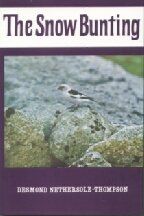
Free birdwatching magazine and guide to finding birds
Buntings
-
Common Reed Bunting
Managing Director
Find out more -
Little Bunting
Director
Find out more -
Snow Bunting
Marketing Manager
Find out more -
Lapland Bunting
Marketing Manager
Find out more -
Rustic Bunting
Find out more -
Ortolan Bunting
Find out more -
Cretzschmar's Bunting
Find out more -
Yellowhammer
Find out more -
Pine Bunting
Find out more -
Cirl Bunting
Find out more -
Red-headed Bunting
Find out more -
Yellow-breasted Bunting
Find out more -
Corn Bunting
Find out more -
Rock Bunting
Find out more -
Black-faced Bunting
Find out more -
Black-headed Bunting
Find out more
Cardinal (Corrie Herring Hooks Series)
In this inviting guide, June Osborne and Barbara Garland follow a year in the life of the Northern Cardinal with a fact-filled text and glowing colour photographs. They describe how cardinals stake out territory and choose mates, find a nesting site and incubate their eggs, feed the young and prepare them for full-fledged independence. The Cardinal also explores the special relationship that humans have with their favourite redbirds. Osborne traces the symbolic use of cardinals as state birds (Illinois, Indiana, Kentucky, North Carolina, Ohio, Virginia, and West Virginia) and athletic mascots and shows how they appear on everything from postage stamps to Christmas cards, as well as in fine art, literature, and Native American folklore.
Buntings and Sparrows A Guide to the Buntings and North American
Covers all the buntings (Palearctic) and sparrows (Nearctic) - 108 species - of the Holarctic region. These birds are members of the sub-family emberizinae, and are represented in nearly every habitat in the region. They also present considerable identification problems.
Sparrows and Finches of the Great Lakes Region
Sparrows and Finches offers birders information on this rich variety of species right in their own backyard. It's hard to keep all those little brown birds apart. This handy, bring-along guidebook is designed to help beginner and advanced birders to identify accurately over 48 types of sparrows, finches, and their look-alikes.
Sparrows and Finches focuses only on these two families within a defined geographical location: the Great Lakes and eastern North America. As result, it offers comprehensive coverage in a small, convenient format.
The Snow Bunting
The Snow Bunting is a rare bird about the size of a sparrow. It is possibly the most romantic and elusive bird in the British Isles and certainly the hardiest small bird in the world. The author gives a full description of the bird, dealing with such topics as habits and habitats in Scotland, distribution numbers and movements, which covers all aspects of the life of these seldom seen and little known birds, and summarises excellently what he has learnt not only from personal experience but from relevant literature. Of particular interest to the modern naturalist will be the descriptions of the privations the author underwent in the Cairngorms in order to get this information.
In search of the Cirl Bunting
Cirl Bunting (emberiza cirlus). "The Author traces its history in England and Wales and charts its decline, together with personal observations of its habitat and day to day existence.". Privately published 1993. 127 pages with 14 plates.
A Guide to the Identification and Natural History of the Sparrows
A Guide to the Identification and Natural History of the Sparrows of the United States and Canada provides comprehensive and up-to-date information on all the features that make possible identification of all 62 species of sparrows that occur in North America. The text gives detailed descriptions of the summer, winter, and juvenile plumages of each species, as well as comparisons with similar species. The species accounts are illustrated with range maps and superb line drawings showing behavioural postures and, where useful, fine features of tail feather patterns. The 27 colour plates splendidly illustrate the various plumages of each species with the emphasis on the distinctive appearance of birds of different sex, age, and geographic regions. This beautiful and authoritative book will be a must for the library of all keen birders living in and visiting North America.
Cowbirds and Other Brood Parasites
The Brown-headed Cowbird is known to use the nests of more than 200 other bird species, and cowbirds in general are believed to play a role in the decline of some migratory songbird populations. These brood parasites birds that lay their eggs in the nests of others have long flourished in North America. In this timely book, Catherine Ortega summarizes and synthesizes a wealth of information on cowbirds from around the world that has appeared since the publication of Herbert Friedmann's classic 1929 monograph on these birds. Most of this information has appeared in the last quarter-century and reflects advances in our understanding of how brood parasitism influences, and is influenced by, host species. Ortega shows that in order to manage cowbirds without further damaging delicate balances in host-parasite relationships, it is necessary to understand such factors as behavior, reproduction, population dynamics, and response to landscape patterns. She examines and explains the origin, evolution, and costs of brood parasitism, and she discusses the philosophical and ecological considerations regarding the management of cowbirds a controversial issue because of their perceived influence on threatened and endangered birds. Because brood parasitism has evolved independently in various bird families, information on this adaptive strategy is of great ecological interest and considerable value to wildlife management. Cowbirds and Other Brood Parasites is an important reference on these creatures that enhances our understanding of both their behavior and their part in the natural world.
Ecology and Management of Cowbirds
In the past two centuries, cowbirds have increased in numbers and extended their range across North America, while many of the native songbird species whose nests they parasitize to raise their young have declined. This timely book collects forty essays by most of the principal authorities on the biology and management of cowbirds. The book's goals are to explore the biology of cowbirds, the threats they pose to host species and populations, and the management programs that are being undertaken to minimize these threats. The book is organized into five sections, each with an extended editors' introduction that places the contributions in a broad, up-to-date setting.The sections cover: the changing abundance of cowbirds and the ways in which their numbers can be estimated; host choice by cowbirds, the negative effects of cowbirds on particular host species, and the daily patterns of cowbird behavior; behavioral interactions between cowbirds and specific host species; patterns of cowbird abundance and host use across varying landscapes; and, management programs designed to control cowbirds and protect threatened songbirds. James N. M. Smith teaches at the University of British Columbia in Vancouver. Terry L. Cook works for the Nature Conservancy in Seattle. Stephen I. Rothstein teaches at the University of California, Santa Barbara. Scott K. Robinson holds joint appointments at the Illinois Natural History Survey and the University of Illinois, Champaign. Spencer G. Sealy teaches at the University of Manitoba.
Please note that we receive many hundreds of e-mails weekly. We will try our best to respond to your enquiry as efficiently and quickly as possible. If your enquiry relates to reserve and birding site access, please contact the relevant organisation. Sick, injured or young birds to RSPCA.
Enquiries about the sale of used birding equipment or ornithology books should be sent to the contact below.
Thank you
Join our mailing list
Contact Us
We will get back to you as soon as possible
Please try again later

















